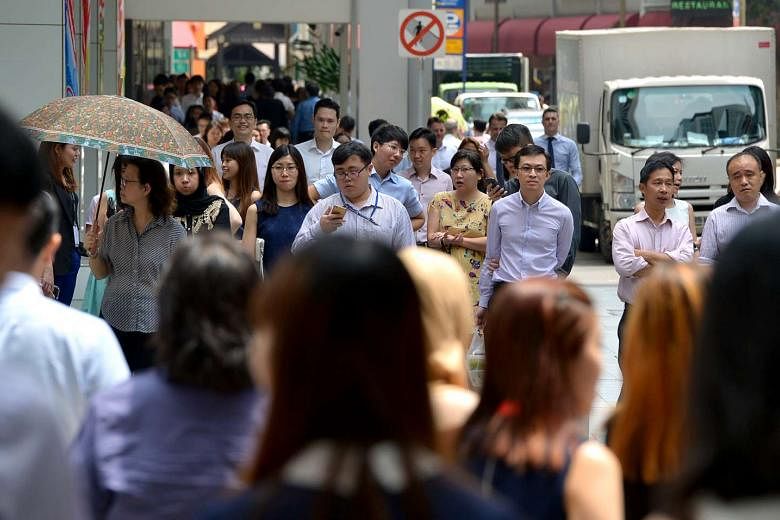SINGAPORE - The Trade and Industry Ministry (MTI) has narrowed its growth forecast for 2016 - the Singapore economy is expected to grow 1 to 1.5 per cent this year, from an earlier forecast of 1 to 2 per cent.
Growth next year is tipped to come in between 1 and 3 per cent on the back of a slighter stronger global outlook, the MTI said on Thursday (Nov 24).
It made these forecasts in the latest Economic Survey of Singapore, which showed that the economy expanded 1.1 per cent in the third quarter from the corresponding period a year ago - an upward revision from earlier estimates of 0.6 per cent growth.
Here are some quick views from analysts.
OCBC economist Selena Ling
The MTI flagged key downside risks in the global economy, which are quite familiar to market watchers. These include Brexit, a sharper-than-expected slowdown in China complicated by rising corporate credit default risks, and political risks and uncertainties leading to greater economic uncertainties including the backlash against globalisation and trade.
The latter is likely referencing the incoming US President-elect Donald Trump, who had made anti-globalisation, immigration and China-specific remarks during his campaign.
We anticipate that fourth quarter economic growth could be in the range of 0.6 per cent year on year, to bring full-year growth to 1.3 per cent. The familiar drags from the wholesale trade and finance and insurance segments will likely extend into the fourth quarter.
The growth sectors are infocomms and other business services industries which would help to buffer but not fully offset the external growth drags. For corporates, the domestic concerns remain the elevated cost environment and tightening financial conditions.
ANZ economist Ng Weiwen:
Notwithstanding this upward revision from advance estimates, today's data does not detract from the fact that sequential growth still remains entrenched in negative territory and the economy still runs the risk of a technical recession in the fourth quarter.
In my mind, even if the economy slips into a technical recession, the recession will be largely technical in nature in that the extent of contraction will be mild and more modest than during the decline during the 2008/2009 global financial crisis.
UOB economist Francis Tan:
Private consumption expenditure grew only 0.6 per cent, possibly a result of weaker real wage growth and less-tight labour market. Weaker consumer confidence has resulted in a collective "tightening your belt" situation amongst residents.
What is more worrisome is the 2.7 per cent contraction in gross fixed capital formation, as it tells us that businesses were also a lot more cautious about spending money for the future, as they may find it pointless if demand is weak.
The writing is on the wall. The only constant this year was the downward revision of GDP growth forecast. The weak external demand that has bugged us since 2014 is no longer just impacting externally-oriented industries, but had infiltrated into the domestic sectors too.
With our monetary policy floored at current levels, both businesses and the labour market will require more short-term, targeted measures to survive this difficult period.


